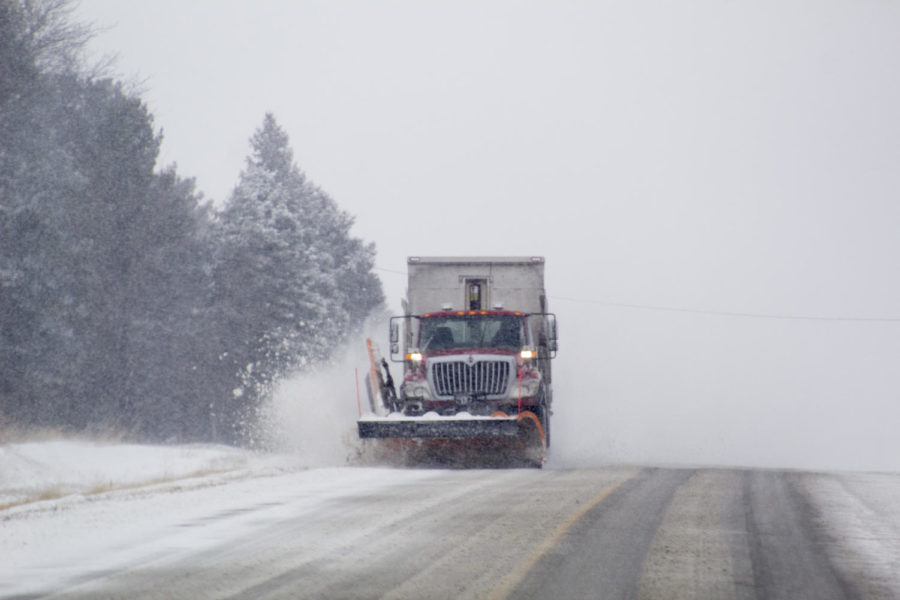Iowa DOT and Iowa State research to benefit drivers
Katlyn Campbell/Iowa State Daily
Snow falls across Ames and the Iowa State campus on Jan. 12. The total snowfall by the end of the day hit 2.5 inches.
January 30, 2019
The Iowa Department of Transportation (DOT) and Iowa State researchers are working together to make traveling more safe for drivers on the road.
By combining resources, technology and brain power, the group has made efforts to make drivers aware of what is to come on their journeys.
Iowa State researchers involved in this work are led by Neal Hawkins, associate director of the Institute for Transportation; Anuj Sharma, an associate professor of civil, construction and environmental engineering and a research scientist for InTrans; and Skylar Knickerbocker, a research engineer for InTrans. They are working with the DOT to develop the following ideas.
Traffic Incident Management Enabled by Large-data Innovations, also known as TIMELI, involves Iowa State researchers who use computers to scan camera feeds and sensor data. By doing so, they can identify traffic problems and quickly alert DOT staffers. This project will help find better ways to identify traffic problems.
“We receive a lot of data; this requires using machine learning and other high performance machines,” Sharma said. “We find out what different things can be done for safety applications to essentially put out good messages on the road so that people are aware of any slow downs happening in front of them. We essentially are in control of not just purely informing drivers but also making policies at the DOT.”
One aspect of the research is using artificial intelligence to understand driver behavior. This uses data from cameras, GPS systems and accelerometers built into smartphones. This goes as deep as even looking at how older drivers respond to fatigue or drivers with diabetes respond when their blood sugar is low. They also study how drivers respond to traffic signs, work zones and detours.
Another aspect is using artificial intelligence to call out the snow plows. These data tools can analyze the forecast, radar and traffic data and predict the spread of winter storms and their effect on traffic. This helps them to direct the plows to the areas that will be hit the hardest. This could potentially calculate the probability of crashes caused by approaching weather and warning drivers ahead of time.
“We really want people to be prepared if they are going to be driving in the winter time — that is really important to us,” said Scott Marler, Iowa Department of Transportation. “Our emphasis is safety.”
The Iowa DOT 511 website is 511ia.org, and they also have a mobile app to check the roads before traveling. The site has plow camera photos that show the roads every few minutes from the plow drivers front window.
There are also heat maps that show where plows are, how much ice or snow is on the roads and traffic back-ups on the road. You can also check out what the Iowa DOT is doing on multiple social media accounts like Facebook and Twitter.
















